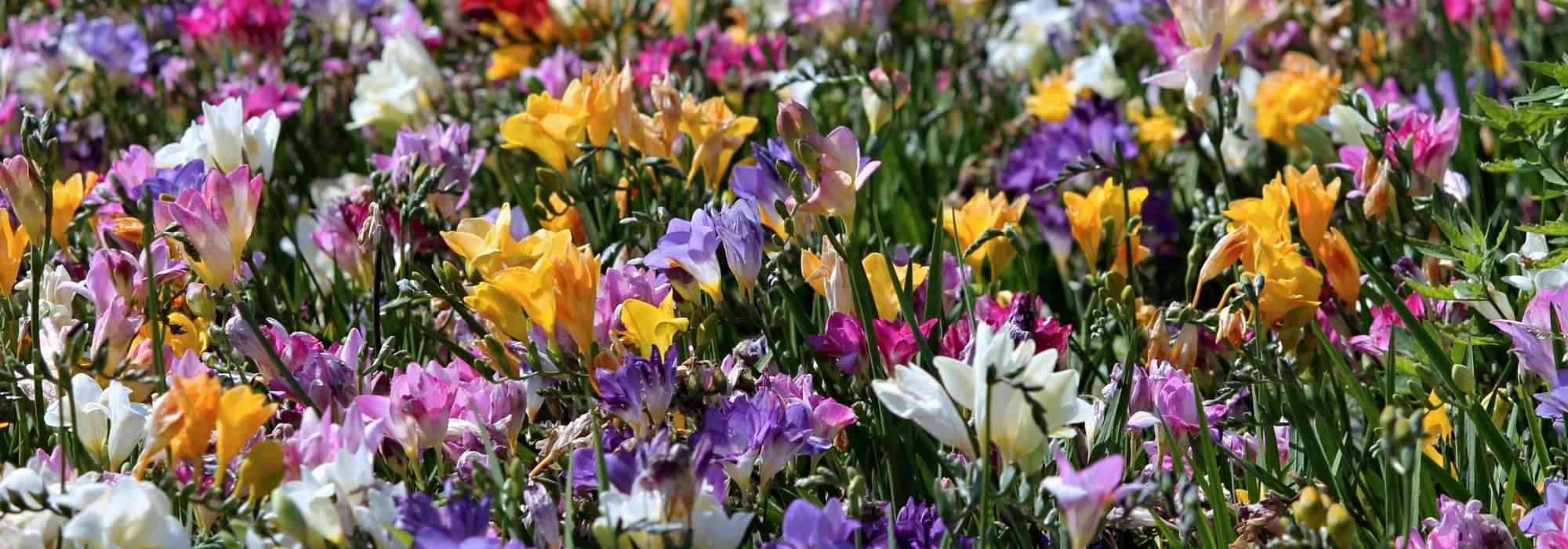
Freesia: planting, cultivation and care
Contents
Freesia in a nutshell
- Double or single freesia flowers are among the most fragrant flowers: they diffuse a sweet scent reminiscent of jasmine
- Hybrid freesias (Freesia x hybrida) display a range of colours: white, yellow, red, pink or mauve
- Freesia is a frost-tender plant that does not tolerate temperatures below -3°C: not hardy in most regions, bulbs must be lifted and overwintered in frost-free conditions
- It prefers cool, well-drained, sandy to stony soils
- Blooms profusely from May to September in borders, rockeries, containers and brightens summer bouquets
A word from our expert
With discreet elegance, a touch old-fashioned, Freesias are beautiful scented bulb flowers, emblematic of slightly vintage floral arrangements. Irreplaceable in bouquets, freesias are making a notable comeback in gardens.
From May to September, double or single freesia flowers in a wide range of colours emerge from herbaceous clumps to herald summer!
From white freesia to blue freesia, all give off a delicious heady, sweet scent reminiscent of jasmine. They also come in red, yellow, pink, lilac and orange to lend an air of delicacy or exotic accents to the foreground of a bed of annuals or perennials, in a sunny flowerbed, on rockeries or in pots.
Magnificent in beds, freesias are among the most beautiful cut flowers and also have their place in a florist’s garden.
Frost-sensitive in most of our regions, freesia bulbs must be lifted to overwinter in frost-free conditions before replanting the following spring.
In the language of flowers, freesia symbolises unconditional love.
Discover freesias and how to plant them successfully in the garden or in pots!
Description and botany
Botanical data
- Latin name Freesia
- Family Iridaceae
- Common name Freesia, Cape freesia
- Flowering May to September
- Height 0.15 to 0.50 m
- Sun exposure Sun
- Soil type Clay-loam (rich and light), Stony (poor and free-draining) and fresh
- Hardiness frost-tender
Freesia, also called Cape freesia, is a perennial bulbous plant with a corm native to eastern and southern Africa, notably Cape of Good Hope. It belongs to family Iridaceae and some species, notably Freesia laxa, have become naturalized in parts of southern France.
Genus comprises 15 freesia species but only horticultural hybrids (Freesia x hybrida) are cultivated, most descending from Freesia refracta. They display very varied colours and some hybrids bear double flowers.
Freesia grows from a bulb, more precisely a corm (or cormus) conical in shape, allowing plant to store nutrients and water (it is a storage organ). From this corm, plant forms a tuft with a fairly spreading habit of deciduous leaves from which emerge rather slender stems about 0.20 to 40 cm high.
From centre of each freesia clump emerge 4 to 5 flower stems. Corm produces long narrow ribbon-like sheathing leaves 10 to 40 cm long, sword-shaped with sharp tip arranged in a fan from base. Of a lovely soft green, their shape slightly resembles foliage of grasses or of daylilies.
In spring, freesia’s brilliant and deliciously scented flowering, supported by soft green clumps, never goes unnoticed. Carried on flexible, gracefully arched flower stems that are not very trailing, flowers appear from May to July, sometimes until September, above the narrow leaves.
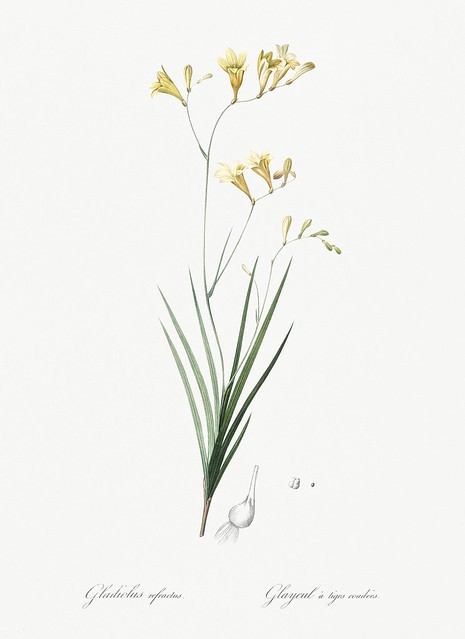
Freesia – botanical illustration taken from Les liliacées (1805) by P. J. Redouté
Freesia flower stems have a rather distinctive convex habit, bending at right angle from first flower; flowers are arranged unilaterally in clusters along tip of this often highly ramified stem. Each stem can bear up to 10 flowers 2 to 6 cm in diameter which open successively, delicate flower buds alongside already open inflorescences. They take shape of funnels or slightly tubular bells. Corollas, widely open and turned upwards, are formed of six tepals. Centre contains stamens.
Although flowers are often single, there are goblet-shaped varieties sometimes double such as Freesia ‘Double Bleu’ or Freesia ‘Double Rose’. From most theatrical to simplest natural forms, freesia flowers also come in almost every colour of rainbow, ranging from pure white to magenta pink via topaz yellow, scarlet red, lavender blue or amethyst.
Freesia makes excellent cut flowers much appreciated by florists for scented, sophisticated and colourful summer bouquets that last up to 3 weeks in vase.
Freesia is among 10 most fragrant flowers, simple white or yellow freesias being most scented; freesia flower exudes an intoxicating, heady and sweet perfume evoking jasmine, orange blossom and neroli.
Of southern origin, freesia is a tender and frost-sensitive plant that does not tolerate temperatures below -3 °C. It is particularly suited to mild climates. It prefers warm sunny positions and light, sandy, not too rich, fresh and well-drained soils free of lime.
Freesia brightens any scree garden or rockery that stays cool, in front of a sunny border or in a flowerbed provided one can admire its fragrant inclined flowers up close. It is also grown in pots to enjoy its scent on a terrace.
Freesia is very often used in perfumery where its suave and intense fragrances serve major brands.
Read also
How to protect bulbs from rodents?Main species and varieties
If the genus includes 15 species such as Freesia grandiflora, Freesia laxa and Freesia lactea, we most often find varieties of hybrid freesias (Freesia x hybrida), in a range of colours, with single or double flowers, mostly descended from Freesia refracta. We also offer mixes of hybrid freesias covering almost every colour of the rainbow.
Most popular
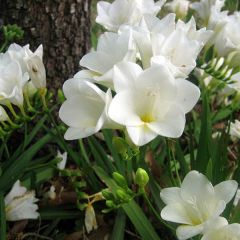
Freesia Simple Blanc
- Flowering time June to August
- Height at maturity 35 cm
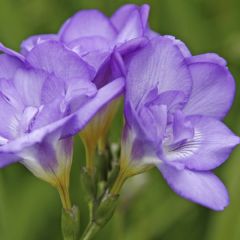
Freesia Double Blue
- Flowering time June to August
- Height at maturity 50 cm
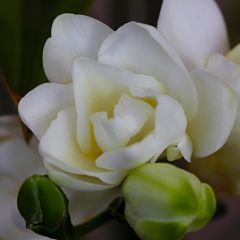
Freesia Double White
- Flowering time June to August
- Height at maturity 40 cm
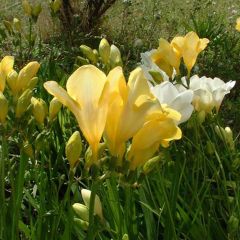
Freesia Single Yellow
- Flowering time June to August
- Height at maturity 40 cm
Our favourites
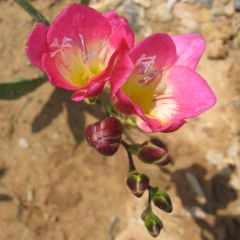
Freesia Single Rose
- Flowering time June to August
- Height at maturity 40 cm
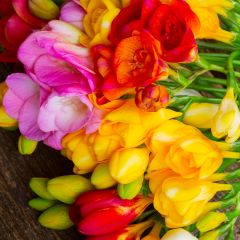
Freesia Double Mix
- Flowering time June to September
- Height at maturity 35 cm
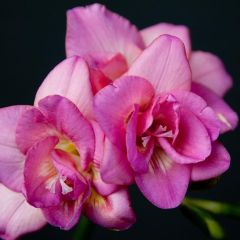
Freesia Double Rose
- Flowering time June to August
- Height at maturity 40 cm
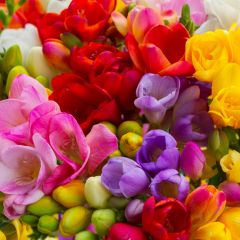
Freesia Simple Mix
- Flowering time June to September
- Height at maturity 35 cm
Discover other Freesia
View all →Available in 2 sizes
Available in 1 sizes
Available in 1 sizes
Available in 1 sizes
Available in 1 sizes
Available in 1 sizes
Available in 1 sizes
Available in 1 sizes
Available in 1 sizes
Available in 1 sizes
Planting freesia
Where to plant freesias?
Freesia grows almost everywhere in France, however it tolerates winter frosts poorly, which is why its cultivation varies by region. Extremely tender and frost-prone, lifting is obligatory in regions with harsh winters if you want to keep them to replant the following year: once foliage has yellowed, freesia bulbs must be lifted and stored dry and frost-free.
In mild regions (olive zone), freesia bulbs can remain in soil with good mulch.
It will be happy and floriferous only in a warm, sunny situation and in light but cool, well-drained soil, preferably sandy and not calcareous.
With its medium size, freesia is well suited to sunny flower beds, borders, rock gardens with annuals or perennials or to cultivation in pots on a sunny terrace or balcony. It is a staple of the cutting garden for making bouquets all summer long.
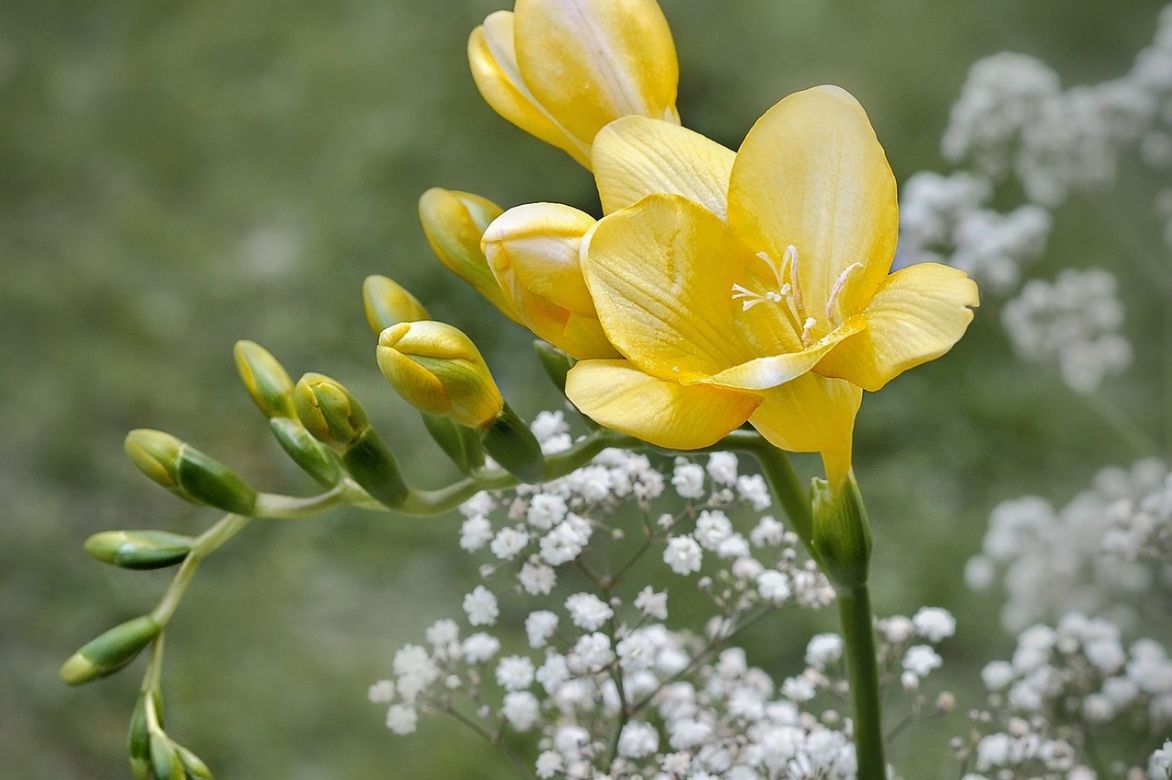
When to plant freesias?
Freesia corms are planted in spring, from March to May after the last frosts, as soon as the soil has warmed, since freesia dislikes frost. If you want an early flowering, bulbs can be forced like hyacinths, planted in autumn in pots and sheltered in a cool, frost-free greenhouse to flower in midwinter (see Ingrid’s advice for forcing bulbs indoors).
How to plant freesia bulbs
In open ground
Freesia bulbs are planted in small groups of 20 to 50 to create a strong effect in borders, in a sandy, rich and light mix of two thirds potting compost and one third river sand.
- Loosen soil to 20–25 cm depth and remove weeds, roots and stones
- In heavy soil, improve drainage with gravel or river sand mixed into soil or placed as a 5–10 cm layer beneath bulbs
- With a dibber, plant about 3–5 cm deep, point of bulb upwards
- Space bulbs 20 cm apart in all directions
- Cover bulbs with soil
- Firm down with hand
- Stake the flower stem if necessary
- Water without waterlogging
Find even more advice to succeed in planting freesias in our guide and in How to plant freesia bulbs?
In pots
Freesia bulbs are easy to grow in pots to enjoy their scented flowering all summer on a terrace or balcony mixed with other summer bulbs. In a 15 cm pot, allow 5 to 7 freesia bulbs, each spaced 6 cm apart. More advice on planting bulbs in pots in our video!
- Plant 3–5 cm deep, point of bulb upwards in a mix of sand, potting compost and turf
- Place a layer of clay pebbles in bottom of a pot with drainage holes
- Cover with remaining mix
- Firm down
- Water lightly, then regularly but sparingly
- In autumn, bring pots under cover to a temperature not falling below 3 °C
Read also
Planting summer flowering bulbsMaintenance, pruning and care
freesia is a bulb fairly easy to grow, it needs only a few simple steps.
It does not need much water. Water only during growth and avoid wetting the foliage too much: water regularly throughout summer, especially in hot spells to keep soil cool but without waterlogging the soil as freesia strongly dislikes excess moisture which makes bulbs rot. Keep its roots cool with a mulch.
Leave bulbs dry during summer dormancy.
In pots: water once or twice a week, allowing soil surface to dry between each watering. Optionally add a little organic bulb fertiliser to the watering water throughout flowering. In winter: stop watering.
Flower stem sometimes needs staking.
In regions with mild winters where frosts are light and infrequent and in well-drained sandy soil, corms can be left in place over winter, simply protected from frost by a thick mulch of dry leaves: simply cut back foliage to soil level once it is completely withered, to give bulb time to rebuild reserves needed for next flowering.
In October or November in colder regions, once foliage has yellowed and is completely dry, lift the corms, remove buds and store them in a crate in a dry frost-free place to replant the following spring. Bring pots in before frosts. To put pots back outside and replant bulbs, wait until temperatures are mild and soil warmed.
→ Read also : Overwinter summer bulbs with tips from Virginie!
No pruning is necessary, however you can remove faded flowers as they appear and cut flower stems after flowering.
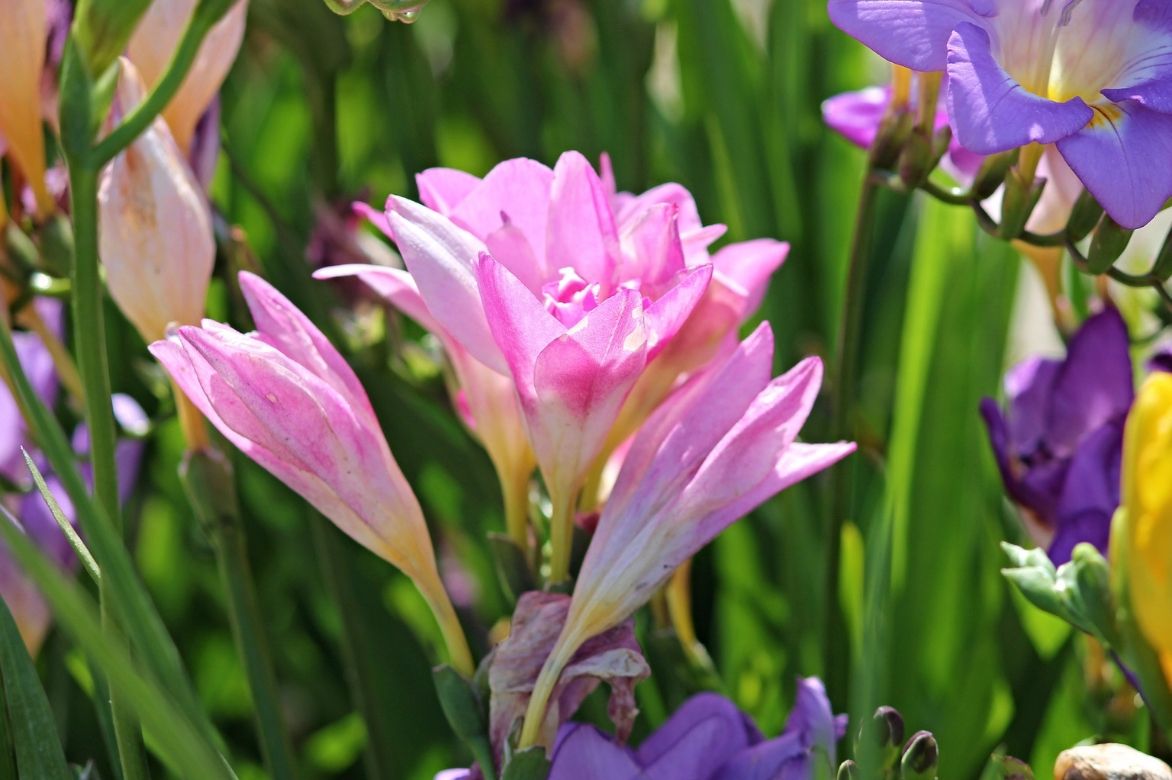
Potential diseases and pests
Freesia has average resistance to diseases. In poorly drained soil, moisture responsible for bulb rot, grey mould (Botrytis), causes greyish spots on leaves and flowers.
It is regularly endangered by gastropods that feast on its young leaves. Protect it from their attacks by discovering our effective, natural methods to control slugs.
Fusariosis and stromatiniosis are also diseases that can endanger freesia: they cause drying out and yellowing of leaves, spots on leaves and flowers and necrosis on bulbs: destroy affected bulbs.
Mosaic virus can also cause discolouration of flowers and striate markings on leaves: remove diseased plants.
Freesia is sometimes attacked by aphids, which suck sap, weakening the plant. We recommend spraying black soap diluted in water onto the foliage.
If infested by red spider mites: dampen the foliage, as these insects dislike humidity.
Freesia propagation
If sowing is possible but difficult to succeed (let a few flower stems set seed to collect seeds), the easiest way to multiply freesias, however, remains the division of corms or separation of bulbils.
How to divide freesia corms?
- Do in autumn when leaves have yellowed while lifting bulbs for storage
- Lift clump with a digging fork
- Separate bulblets or bulbils forming on edges of bulbs by hand or with a small knife
- Store them dry and protected from light in pots filled with sand
- Following spring, replant in garden or in pots
Which plants to pair with freesia?
Slender, with their elegant flowers in rich colours, freesias bloom generously throughout summer in every garden, from the most romantic to the most exotic. They add originality to mixed borders, rockeries, flowerbeds, flowering containers as well as to the cut-flower garden — see our guide to create « a garden for cutting ».
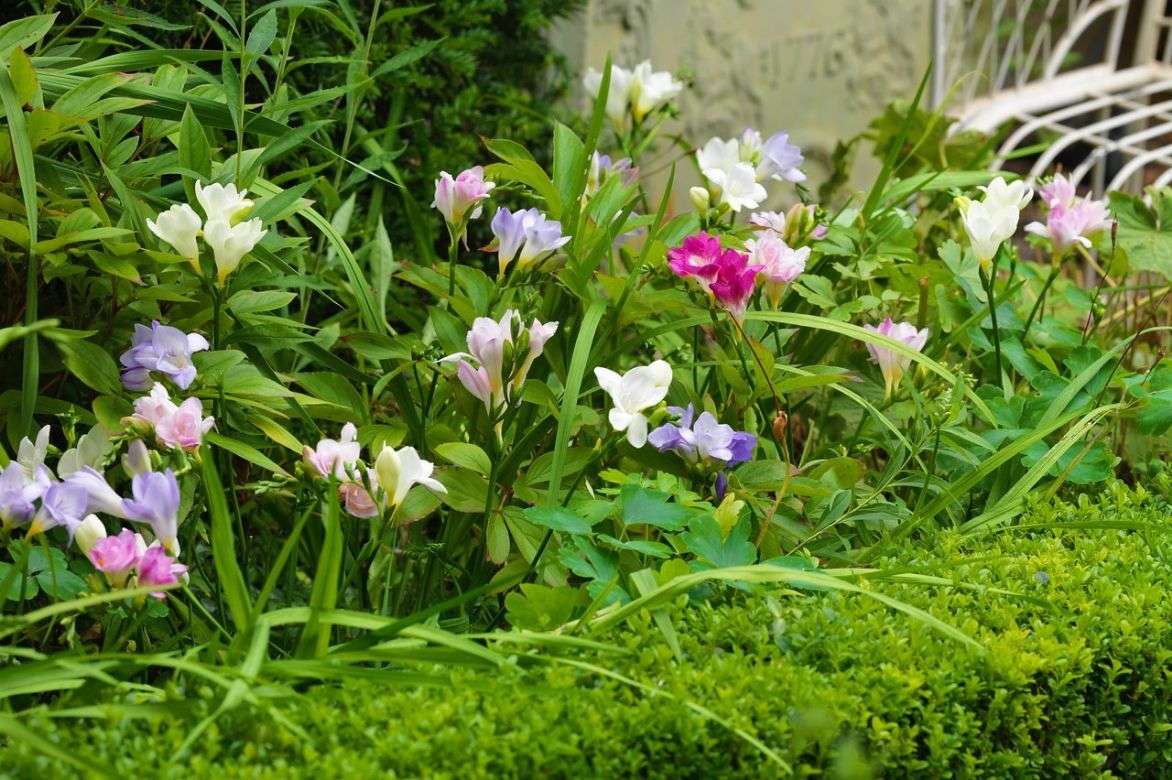
Colourful freesia border
As the flowers of freesia are declinate in a wide range of colours, they allow many combinations, catching the eye sometimes with vivid hues, sometimes with softer tones (white, pink, pale yellow…).
Freesia can establish in any scree garden or rockery, in company with annuals or perennials such as dianthus or diascias for pink schemes, or perennial flax and coreopsis in blue/yellow harmonies.
In milder regions, it will provide a subtle touch at edge of a large border, looking precious alongside other scented bulbous plants or not, such as Crinum or Crinole de Powell, agapanthes, Himalayan giant lily, gladioli, Amaryllis belladonna.
In a naturalistic garden, it will sit simply alongside perennials with summer flowering such as geraniums, nepeta, achillea and nigella.
For a romantic atmosphere, in pink/white harmonies, plant freesias at foot of old roses, cosmos, aconites, astrantias or dahlias with fresh colours and punctate your border with a few feathery grasses such as fountain grass.
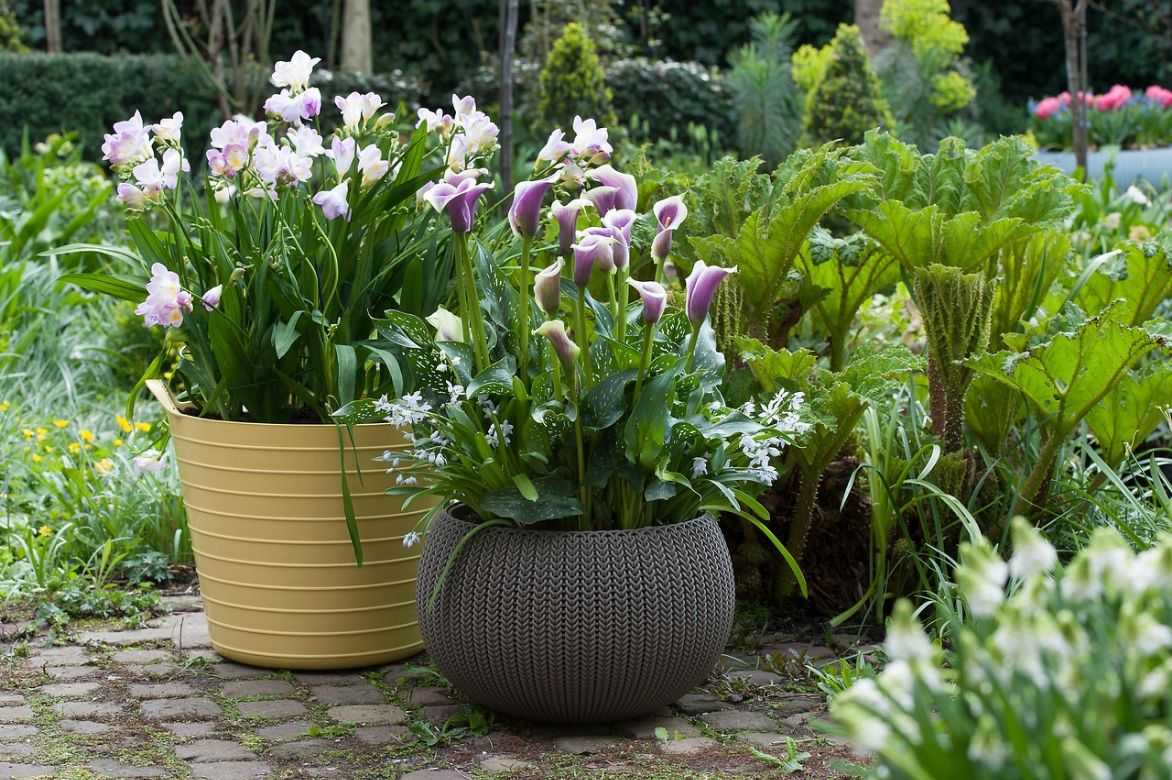
Freesia grown in a pot, accompanied by a container of Zantedeschia in foreground
It is also very decorative in massifs of exotic inspiration with Siphonnas, daylilies, Phlomis fruticosa, orange, yellow or red Crocosmias, Phormium and with other summer bulbs of exotic appearance such as Lycoris or spider lily, cannas, Peruvian lilies or even tuberous species such as Tropaeolum tuberosum.
Potted freesia can be paired with other elegant plants such as Amarcrinum on sunny terraces and indoors.
Useful resources
- Discover our tips to grow freesia in pots
- Planting bulbs? 7 practical and useful tips!
- Enchant your summer evenings with our fragrant flowering bulbs, their intoxicating scents
- Discover the most beautiful summer bulbs!
- Subscribe!
- Contents
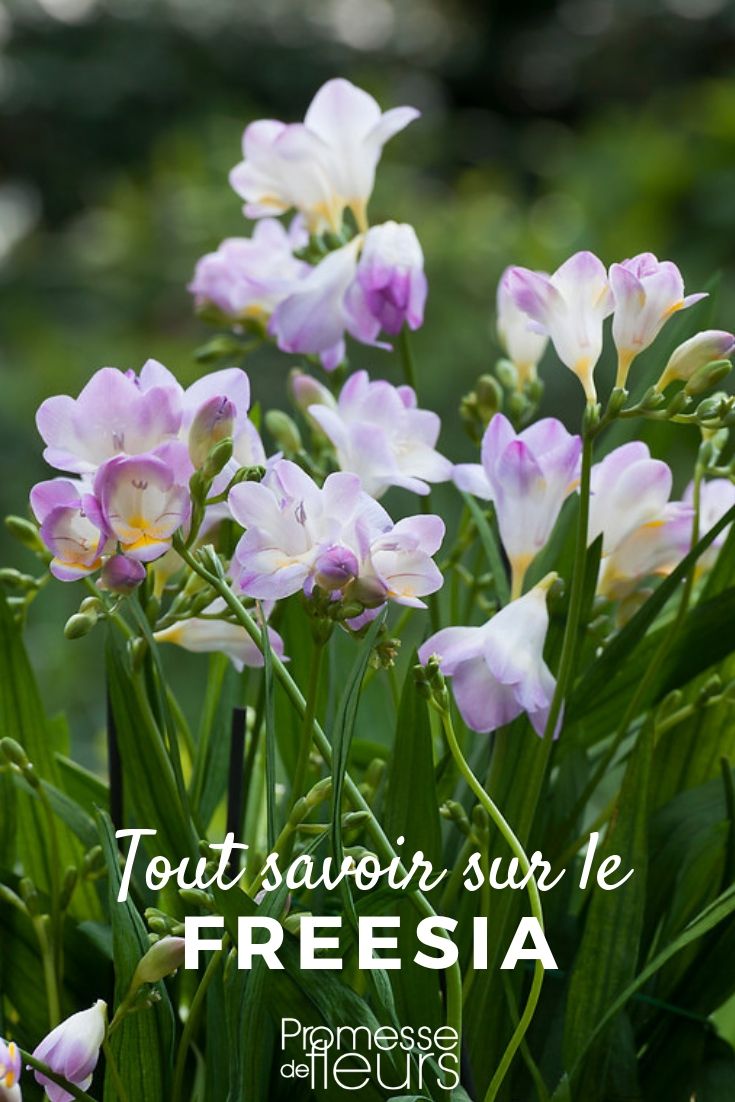






























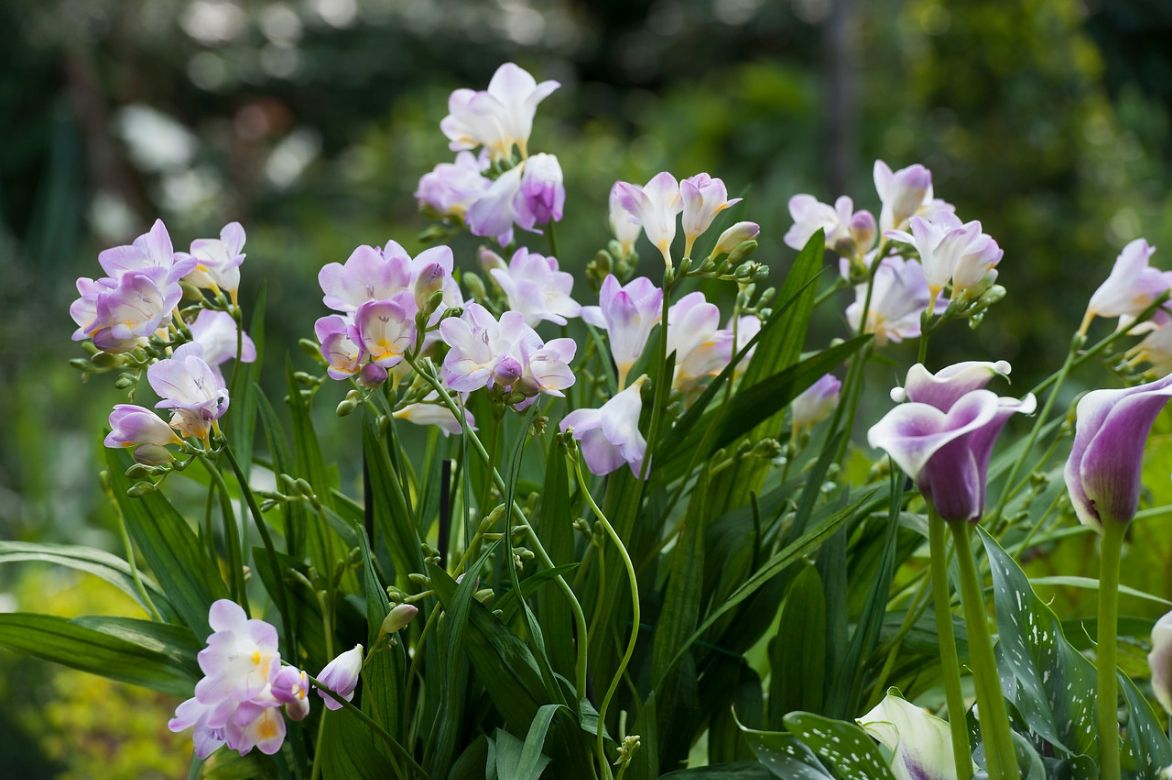

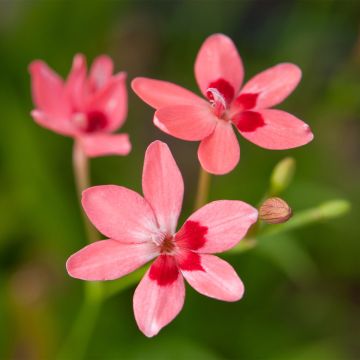





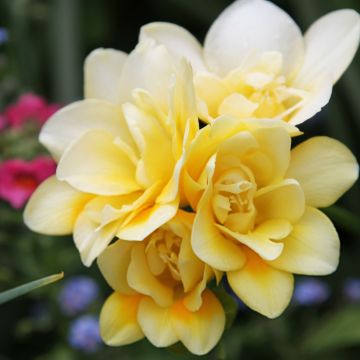
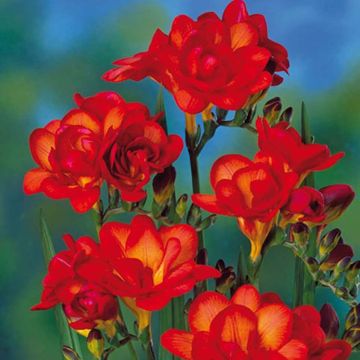
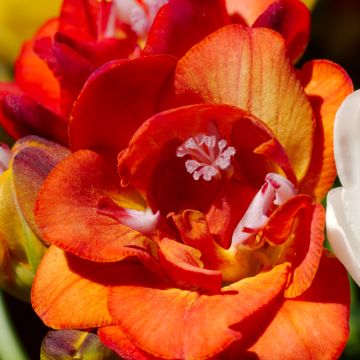
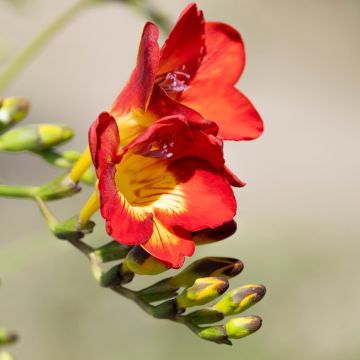
Comments